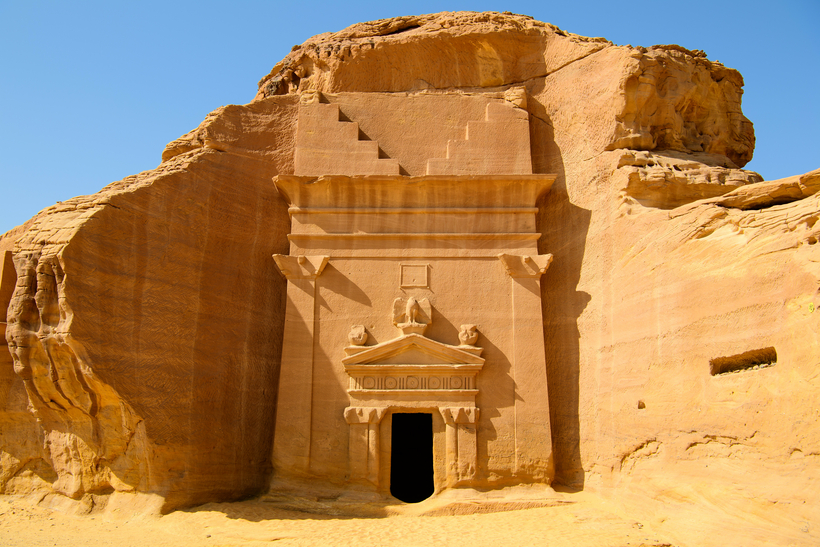“The desert could not be claimed or owned—it was a piece of cloth carried by winds, never held down by stones, and given a hundred shifting names long before Canterbury existed.” So muses the desert explorer László de Almásy, the title character of Michael Ondaatje’s 1992 novel, The English Patient. “Its caravans, those strange rambling feasts and cultures, left nothing behind, not an ember.” Almásy is thinking of the vast and volatile sands between Middle Eastern cities, a terrain that quickened the pulse of cartographers and enthralled adventurers such as T. E. Lawrence.
But the trade hubs that were carved in stone, the ancient cities that were vibrantly multicultural crossroads between East and West, these were not all swallowed by sandstorms. Rose-red Petra in Jordan, since the 19th century a major stop on Holy Land tours, sees one million visitors a year. Palmyra in Syria, one of the most cosmopolitan of all crossroads, deeply loved for its empyrean architecture, existed in ghostly glory until 2015, when it was mercilessly bombed by ISIS extremists, who also pillaged ancient Assyrian sites and monuments. Enter Hegra.

In 2021, the ancient hub city of Mada’in Saleh—otherwise known as Hegra—is poised to become a modern rock star. This sister city to Petra, located in Saudi Arabia rather than Jordan, is largely unknown. With the oil industry in flux, however, and tourism a lucrative resource, Arab powers are lifting the virgin’s veil from Hegra.
In the desert, those who have the water have the power. Both Petra and Hegra were built by Nabataeans, desert-dwelling nomads who mastered hydraulic engineering, controlled the spice and incense trade routes, and became wealthy merchants. Living large from the fourth century B.C. into the first century A.D., the Nabataean kingdom included lands in Jordan, the Sinai Peninsula of Egypt, and sections of Saudi Arabia, Israel, and Syria. Eventually it was annexed by the Roman Empire.
Petra was re-discovered in the 19th century, but Hegra, the Nabataeans’ second-largest city, went unexplored, left to the Bedouins. That changed in recent years with a joint Saudi and French excavation. And while Hegra has only 111 tombs compared to Petra’s 600, they are in better condition and display an exciting mix of decorative influences—Mesopotamian, Greek, Persian, Egyptian; sphinxes, griffins, lions, Medusas. “Arab Baroque” is what the archaeologist Laïla Nehmé, speaking to Smithsonian magazine, calls the style. “All of us,” Almásy says of the desert’s influence, “wished to remove the clothing of our countries. It was a place of faith. We disappeared into landscape.” —Laura Jacobs


 Discover
Discover